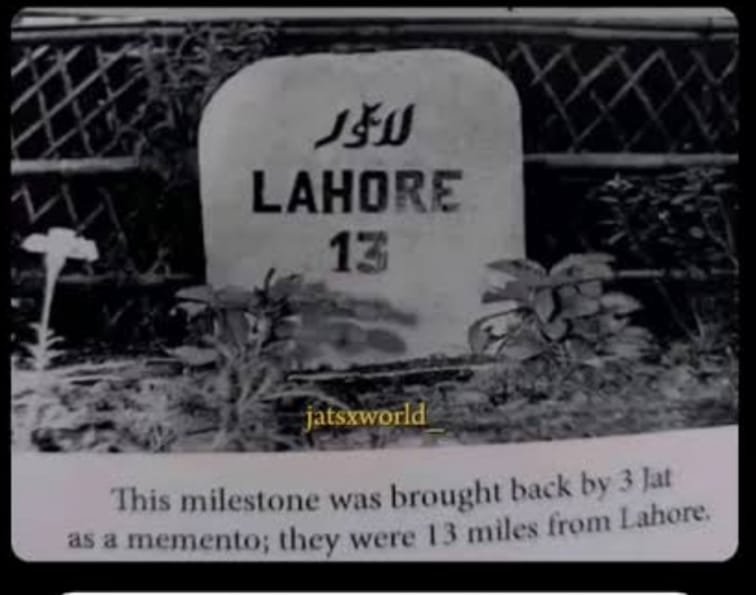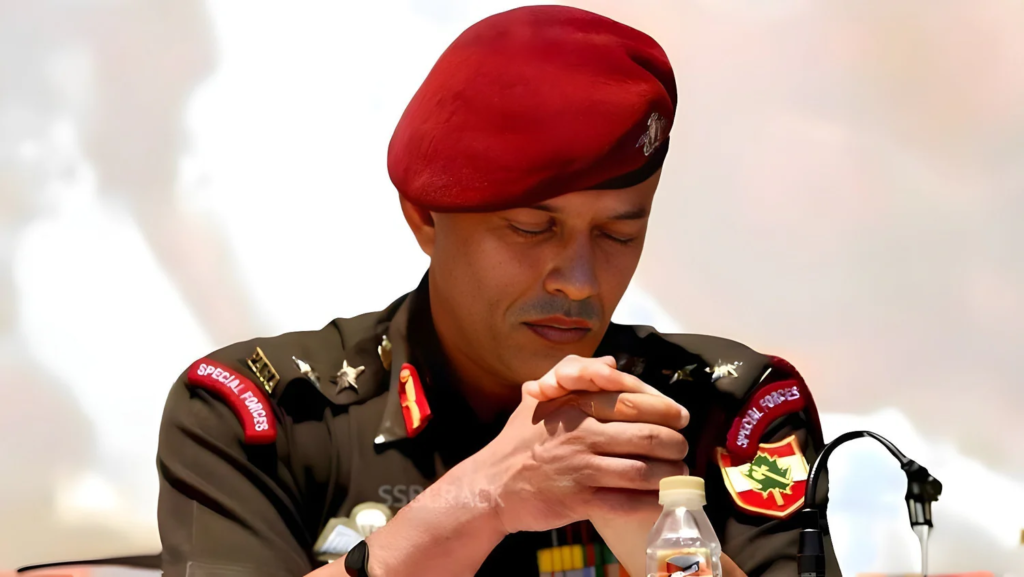Abdul Hamid was among the architects of Asal Uttar victory during the 1965 war
Capt Amarinder Singh

DURING the 1965 India-Pakistan war, 4 Mountain Division was deployed at Khemkaran in Punjab’s Majha region. Among 4 Division’s most distinguished battalions was 4 Grenadiers. Lt Hari Ram Janu, my course-mate at the NDA, was the Forward Company Commander of this battalion’s C Company. He had been in service for two years and three months. His platoon commander, 2nd Lt BK Vaid, had less than a year’s service.
The company was deployed on the Khemkaran-Chima road. A roadblock had been laid. In the afternoon on September 10, 1965, two jeeps followed by a tank were seen coming up the road from Khemkaran. The jeeps came to a stop near the roadblock.
The forward jeep had two stars on it; an officer stood up and shouted to the nearest Grenadiers trench that had three men and a light machine gun (LMG): “Throw down your weapons; you are surrounded!” The Bren gunner stood up in the trench and froze; he was astonished to see a senior officer standing next to the driver. 2nd Lt Vaid ordered the gunner, “Fire, open fire!” The gunner finally opened fire at the officer and the driver. Both collapsed.
The items recovered from the jeep included an officer’s beret, star plates and a swallow-tailed pennant; it was presumed that Maj Gen Naseer Ahmad Khan, GOC of Pakistan’s 1 Armoured Division, had been killed. This was confirmed because the rescue tank commander had shouted for the ‘General’ and there was a wireless intercept to the effect that ‘Bade imam sahib’ had been killed. The three young men in the trench were Naushad, Sulleman and Shafi.
What had transpired was that the GOC, confused about the whereabouts of the Indian forces, had given his jeep to his Artillery Brigade chief Brig Ahsan Rasheed Shami, who volunteered to carry out a reconnaissance. It was he who stood up to challenge the occupants of the trench and was shot.
The Brigadier’s map case and an operational order marked “top secret” was also found. It was the order for Pakistan’s operation to bypass both the 4 Division and 7 Division defences and then capture the Beas brigade, severing the GT road and communications to all 11 Corps formations.
When the Western Army Commander, Lt Gen Harbakhsh Singh, arrived at the 4 Division HQ on September 11, the Op order and the map were shown to him. I was then instructed to take the documents back to the Command HQ. It wasn’t a pleasant task as the papers were soaked in blood. Along with these were the officers’ identity cards and personal effects. On reaching the Command HQ, I handed them over to the Chief of Staff and they were immediately sent to the Army HQ in New Delhi.
After detailed discussions and a late dinner, Lt Gen Harbakhsh Singh, left at 2 am to take rest. We were to leave for 11 Corps at 5 am. Around 3 am, I was in my sleep when I heard the telephone ring. I answered it and a voice asked for the Commander. I asked him to identify himself. In response, he shouted, “I’m the Chief. Who else do you think!” I said, “Sorry, Sir. I will get the Commander for you.” I called up but got no response. I told my roommate, Capt Jiti Choudhry of Hodson’s Horse — who had been ADC (aide-de-camp) to Gen Daulat Singh — that I was going to the Commander’s room and that when I rang up, he should put the call through.
Lt Gen Harbakhsh was asleep when I entered his room. I shook him awake, saying, “The Chief is on the line, Sir”. Jiti put the call through. I stood by as the Commander spoke. The Army Chief said: “I have seen the Pak Op order for the dash to the Beas. I suggest you withdraw 11 Corps formations to hold a line on the Beas river.” The Commander responded in the negative: “I’ve just come from 4 Division. The situation has stabilised. The 2nd Armoured Brigade is now under its command and 3 Cavalry is also now with 4 Division.” It was decided that the Commander would postpone his visit to 11 Corps and the Chief would visit him at the Command HQ at Ambala.
At 10 am the next day, the Chief arrived at Ambala. A lengthy discussion took place on various matters, but the contentious issue of the Western Command’s withdrawal to the Beas, thereby giving up a large area of Majha (including Amritsar and Tarn Taran), was not taken up as the situation had changed overnight. Had a pliant Commander been in charge, a large chunk of Punjab would have been lost and the morale of the Army would have hit a new low just three years after the Chinese debacle.
Earlier, on September 8, Pakistan’s 1 Armoured Division confronted the battalion at Bhura Kuhna and Asal Uttar. Around 9 am, an LMG section deployed about 20 yards from the road shouted that two tanks were approaching their position from the direction of Khem Karan and were about 200 yards away. Company Quarter Master Havildar Abdul Hamid’s RCL (recoilless rifle) detachment was around 30 yards to the right of the Company HQ. Lt Janu called out to him to engage the tanks as soon as he could see them. Hamid got the lead tank with his first shot. The following two tanks were abandoned intact by their crews. At 11 am, following a severe artillery barrage, another tank attack took place. Hamid once again knocked out the lead tank. The following tanks were also abandoned. The troops attacking B Company disengaged and withdrew.
By 11:30 am, a column of 1/9 Gorkhas withdrew from Bhura Kuhna due to an enemy armoured assault. Around noon, enemy tanks entered the 4 Grenadiers’ battalion defences at Chima and opened fire at close range. The RCL platoon commander, despite being wounded, ordered his detachments to engage the enemy tanks. Hamid’s detachment knocked out two of the tanks that made an attempt to overrun their defences. Another attack was also repulsed, with the enemy losing two more tanks in the process. The battalion suffered six casualties. At 3 pm, a squadron of Centurion tanks of 3 Cavalry reached the spot and forced the enemy to withdraw from Bhura Kuhna. At 2:30 pm, a third attack, this time on B Company, took place and two more tanks were shot by the RCL detachment.
At 9 am on September 9, a fleet of four F86s strafed the area. This was followed by tank attacks at 9:30 am, 11:30 am and 2:30 pm. Hamid accounted for two tanks, and Havildar Bir Singh of B Company two more.
On September 10, the most important day of the Asal Uttar battle, enemy artillery started its bombardment of the Grenadiers at 6 am. One tank led the way on the road, followed by one on either side. The tanks were spotted at 200 yards, but Lt Janu ordered Hamid not to engage them till they were closer. Hamid then destroyed the leading tank, the other two being abandoned by its crew.
At 9:30 am, Hamid shot two more tanks, and while he was sighting the third, both he and the enemy fired simultaneously, hitting each other and killing both crews. 4 Grenadiers had shot 15 tanks and held its ground despite being under constant armoured attack. It received the Battle Honour ‘Asal Uttar’ and the Theatre Honour ‘Punjab 1965’. Hamid was posthumously awarded the Param Vir Chakra for his gallantry during this battle.











































































